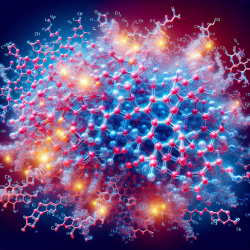Introduction
In the realm of neurosurgery, precision and safety are paramount, especially when dealing with high-grade gliomas located near eloquent areas of the brain. A recent systematic review and meta-analysis titled "Resection of the contrast-enhancing tumor in diffuse gliomas bordering eloquent areas using electrophysiology and 5-ALA fluorescence" sheds light on how combining intraoperative neuromonitoring (IONM) with 5-aminolevulinic acid (5-ALA) fluorescence can enhance surgical outcomes. This blog explores the key findings and implications of this research, providing insights for practitioners seeking to improve their surgical techniques and patient outcomes.
The Power of 5-ALA and IONM
The study reviewed data from multiple sources, focusing on the use of 5-ALA and IONM in surgeries for high-grade gliomas near eloquent brain regions. The primary outcome was the extent of resection, with secondary outcomes including neurological deficits post-surgery. The results were promising, showing a 73.3% rate of complete resection of the enhancing tumor (CRET) and a 62.4% rate of complete 5-ALA resection.
These findings highlight the efficacy of combining 5-ALA fluorescence with IONM to achieve maximal safe resection. The use of 5-ALA allows surgeons to better visualize tumor margins, while IONM provides real-time feedback on the functional status of the brain, helping to avoid damage to critical areas.
Balancing Oncological Control and Neurological Function
One of the key challenges in neurosurgery is balancing the extent of tumor resection with the preservation of neurological function. The study found that while 29.2% of patients experienced neurological decline on the first day post-surgery, this rate dropped to just 4.6% at 90 days. This suggests that the combination of 5-ALA and IONM not only aids in achieving greater resection but also minimizes long-term neurological deficits.
Surgeons must carefully weigh the benefits of extensive resection against the risk of impairing neurological function. The study emphasizes the importance of maintaining a balance between these two goals to ensure the best possible quality of life for patients.
Implications for Practitioners
For practitioners, the findings of this study offer several practical implications:
- Adopt a Multimodal Approach: Integrating 5-ALA fluorescence and IONM into surgical protocols can enhance resection rates and reduce the risk of postoperative deficits.
- Focus on Training: Surgeons should receive training in the use of these advanced techniques to maximize their effectiveness and ensure patient safety.
- Conduct Further Research: While the study provides valuable insights, ongoing research is needed to refine these techniques and explore their applicability in different clinical scenarios.
Conclusion
The systematic review and meta-analysis provide compelling evidence for the benefits of combining 5-ALA fluorescence with IONM in neurosurgery. By enhancing the precision of tumor resection and minimizing neurological deficits, these techniques represent a significant advancement in the field. Practitioners are encouraged to consider these findings in their practice and contribute to further research to continue improving outcomes for patients with high-grade gliomas.
To read the original research paper, please follow this link: Resection of the contrast-enhancing tumor in diffuse gliomas bordering eloquent areas using electrophysiology and 5-ALA fluorescence: evaluation of resection rates and neurological outcome—a systematic review and meta-analysis.










